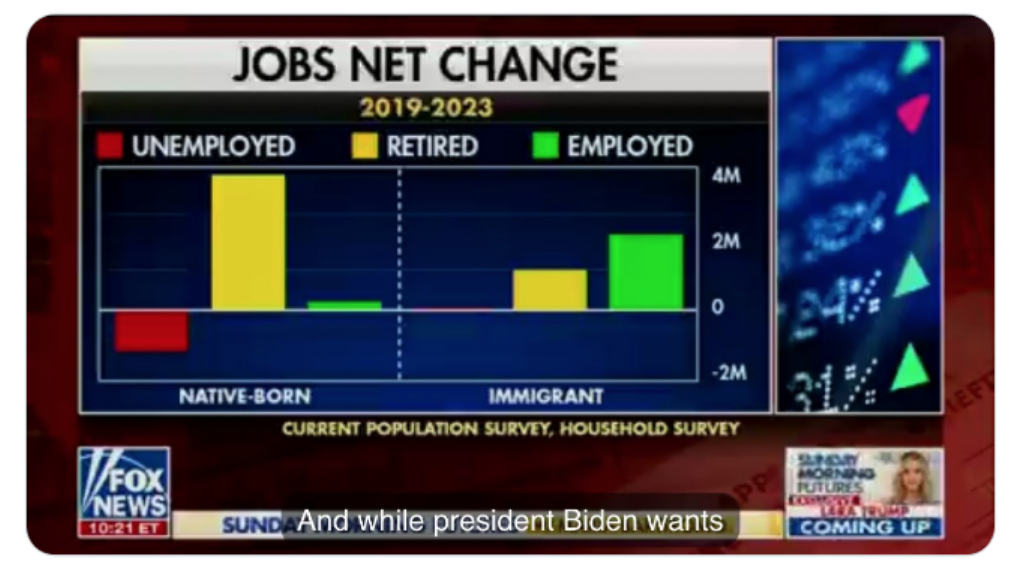Finance
‘All new jobs go to immigrants’

Language can be quite ambiguous. The quote in the title of this blog can be considered true or false depending on how one defines certain words. Consider the graph in this tweet from Matt Yglesias:
This shows an increase in employment of just over 2 million people (in green), with almost all the gains going to immigrants. (By the way, using the more accurate payroll data, employment has actually increased by almost 6 million since the pre-Covid peak of February 2020.)
Here’s another way to split the data. Here are my educated estimates of employment changes since the end of 2019:
US boomers and immigrants: Total employment has fallen significantly
American Gen Xers: Employment is relatively stable
American millennials and Gen Zers: employment has risen very sharply
I believe these are true statements. Are they suggesting that “all new jobs will go to younger native Americans”? That statement is as true as the statement that all new jobs go to immigrants. And just as false.
Here’s one way to think of the image. The boomer generation is very large. Every year, millions of boomers decide to retire. Roughly an equal number of young, native-born Americans enter the job market each year. The net effect is a relatively small change in total employment. (Perhaps a slight increase.) Thus, the overall change in total employment will be approximately equal to the increase in employment among immigrants. My example seemed strange because it lumped boomers and immigrants together. But it’s also weird to lump boomers and Gen Zers together, into a group called “natives.” Their employment levels are moving in radically different directions.
Context is everything. Now I will provide a context in which the statement in the post title is factually true, and another context in which the exact same statement is factually false. Let’s start with some real context.
Example A: “I worry about the future of America. Due to declining birth rates, there is a real danger that we will enter a period of population decline. This will make it difficult to counter the threat from emerging powers such as China and will make the social security system even more insolvent. To avoid this situation, all net employment gains would have to come from immigrants.”
You may not agree with the policy preferences, but at least it’s a coherent argument. The data really suggests that if there were no immigration, low birth rates would gradually reduce our labor force.
Example B: “I heard that all the new jobs go to immigrants. A new factory opened in my city, but I didn’t even apply for the job. Why should they care if employers are only interested in hiring immigrants, not American-born workers?”
This claim is clearly misleading. Most new jobs in the US are filled by native workers. The net change in total employment is similar to the net change in the stock of immigrant workers, but that does not mean that individual Americans can’t find a job.
The phrase ‘new jobs’ could indicate the filling of individual jobs, or a net change in total employment. Language is ambiguous.
This type of misuse of statistics occurs in all kinds of contexts. Suppose you read that illegal immigrants to the US will commit 100 murders by 2023. That sounds like they’ve made the country a more dangerous place. But suppose that 120 illegal immigrants are murdered in 2023. In that case, it is entirely possible (but not certain) that the risk of a native being murdered has actually been reduced by illegal immigration. Net flows and gross flows are two very different concepts and should be treated with care.











